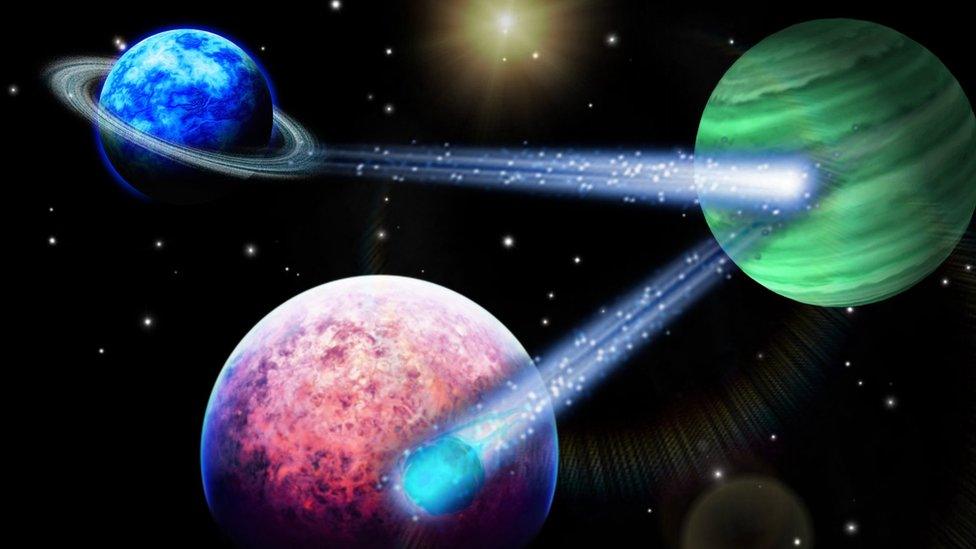How 'bouncing' comets could have spread life through universe
- Published
- comments

Comets that 'bounce' from planet to planet could have spread life across the universe say experts.
The early beginnings of Earth and the solar system was a chaotic time for our planet as it was repeatedly smashed into by asteroids and comets.
Scientist have often speculated about how Earth had all the ingredients needed to create life, and a comet dropping them off is one possible theory.
But now new research suggests that other planets similar to ours could have received the special deliveries from comets, too.
If you can't see the interactive content on the page, click here.
Comets are known to contain a range of the building blocks for life, known as prebiotic molecules.
A team of researchers from the University of Cambridge's Institute of Astronomy developed mathematical models that showed how comets could, in theory, deliver similar building blocks of life to other planets in our Milky Way galaxy.
It's hoped that the research will mean experts on the hunt for extra-terrestrials can focus on exoplanets - planets that orbit a sun, just like Earth - which are more likely to be a home to life.
"It's possible that the molecules that led to life on Earth came from comets, so the same could be true for planets elsewhere in the galaxy," said the study's author Richard Anslow from the University of Cambridge's Institute of Astronomy.
Comets need to be travelling relatively slowly - at speeds below 15 kilometres per second - in order to deliver the ingredients needed for life.
Faster than this, and the essential molecules would not survive, as the speed and temperature of impact on a planet's surface would cause them to break apart.
Experts say in systems where a group of planets orbit closely together their gravitational pull is enough to slow down a comet, passing or bouncing it from the orbit of one planet to another
Experts say the most likely place where comets can travel at the right speed are 'peas in a pod' systems.
In these systems - where a group of planets orbit closely together - the comet could essentially be passed or bounced from the orbit of one planet to another.
The team's scientific models showed that in such a system, a comet could be pulled in by the gravitational pull of one planet, then passed to another planet before impact, slowing down before impact.
If travelling slowly enough, the comet would crash on a planet's surface, delivering the intact molecules that researchers believe are essential for life.
The big question: Do aliens exist?
The team behind the research say systems such as these could be promising places to search for life outside our solar system.
The research could be a step closer to answering the question 'are we alone in the universe'.
"It's an exciting time," says study author Richard Anslow. "Being able to combine advances in astronomy and chemistry to study some of the most fundamental questions of all."
- Published31 July 2019
